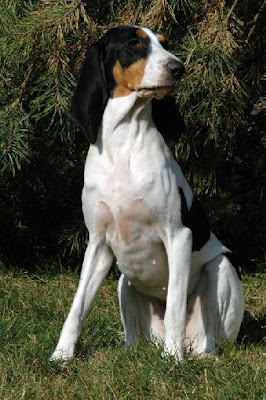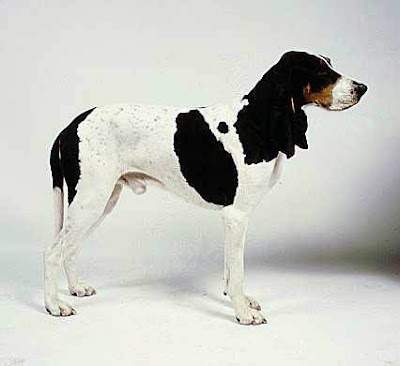The Berner Laufhund has very ancient origins. He reportedly lived in Helvetia during the Roman Empire, and he has been prized by dog fanciers since the fifteenth century. Unlike French Hounds, Swiss Hounds have no English blood in their veins. In 1882, a standard was established for each of the five forms of Swiss Hound. In 1909, the Thurgovian Hound (from eastern Switzerland) became extinct. In 1933, a single standard was written for the four remaining varieties: The Bernese Hound (Berner Laufhund); The Jura Hound (Aargovian Hound);- The Lucerne Hound (Luzerner Laufhund); and- The Schwyz Hound (Schwyzer Laufhund).The ancient Jura Hound, a type similar to the Saint Hubert, has virtually disappeared. Each of the four varieties also comes in a smaller model, the result of crosses between normal-sized Swiss Hounds and bassets.
Berner Laufhund is Small game hunting dog used for hunting with the gun; is generally used for the hare, the deer, the fox and sometimes the boar. He hunts in an independent manner and giving tongue. Even on difficult terrain, he tracks and flushes with great determination.
Berner Laufhund are hardy, vigorous, calm dogs with a great deal of stamina, a discerning nose, and a powerful voice. The hard-driving, gloriously voiced Bernese Hound (the Howler of Jura) is used especially on hare. The Jura Hound, an excellent tracker, is more commonly used on wild boar and deer. The active, enthusiastic Lucerne Hound is similar to the Small Blue Gascony Hound and works on deer. The Schwyz Hound, less popular in France, is reserved for rabbit and hare. Gentle, docile, and very attached to their owner, Swiss Hounds are pleasant companions. Firm training is helpful.
The Swiss Hound or Berner Laufhund has very ancient origins. His presence in times of the Roman Helvetia is certified on a mosaic discovered in Avenches, by the representation of hounds corresponding to the varieties of Swiss hounds. In the XVth century he is sought after by the Italian dog lovers and, in the XVIIIth century, by the French for his exceptional aptitude to the difficult hunting of the hare. His native lines have certainly been influenced by hounds of French breeding brought back to Switzerland by mercenaries. In 1882, a standard was established for each of the 5 "types" of the Swiss Hounds. In 1909, those standards were revised and the total disappearance of the hound of Thurgovie was noticed. The 22nd of January 1933, a single standard was established for the 4 varieties of the Swiss Hound. As to the ancient variety, the hound of the Jura type St. Hubert, it has today disappeared.
Berner Laufhund Medium size, good conformation indicating strength and endurance; long muzzle and lean head with long ears giving him an air of nobility. Lively and passionately keen on hunting; sensitive, docile and very attached to his master.
Jura Hound (Bruno): Fawn with black blanket, sometimes with black overlay; or black with fawn markings over the eyes, at the cheeks, around the anus and on the legs; sometimes a small white patch on the chest may be speckled. Lucerne Hound: "Blue", resulting from an association of black hairs and white hairs, very heavily speckled, with black patches or black saddle; with light to dark fawn markings above the eyes, at the cheeks, on the chest, around the anus and on the legs; a black blanket is admitted. Schwyz Hound: White with either patches or saddle of orange fawn; sometimes very slightly spotted; an orange fawn blanket is admitted.
Berner Laufhund or Bernese Hound Color : White with black patches or black saddle; with light to dark fawn markings over the eyes, on the cheeks, the inside of the ears and around the anus; sometimes very slightly mottled.
Berner Laufhund SIZE: Size at withers: Male: 49 to 59 cm. Female: 47 to 57 cm
Important proportions: Length of body: height at withers about 1.15:1
Size: depth of chest about 2:1. Length of muzzle: length of skull about 1:1

















0 comments:
Post a Comment